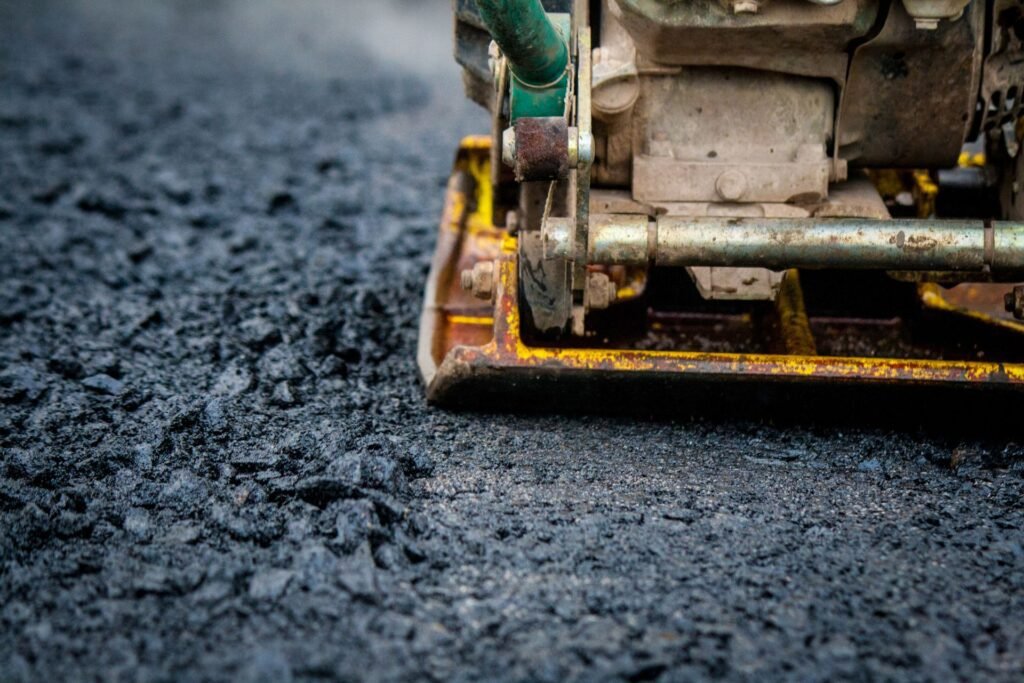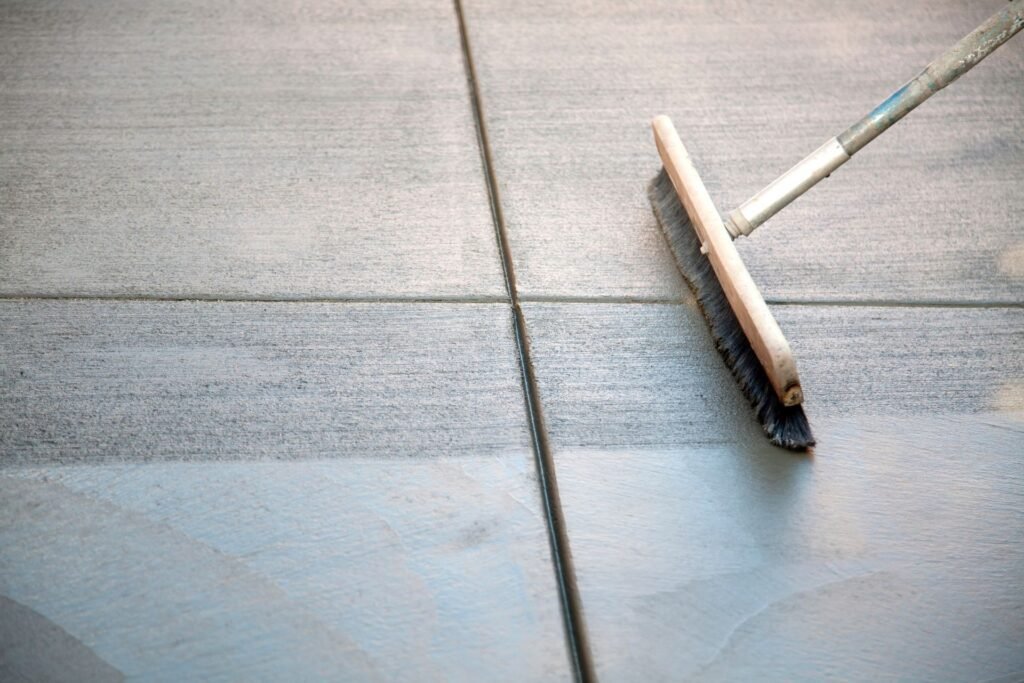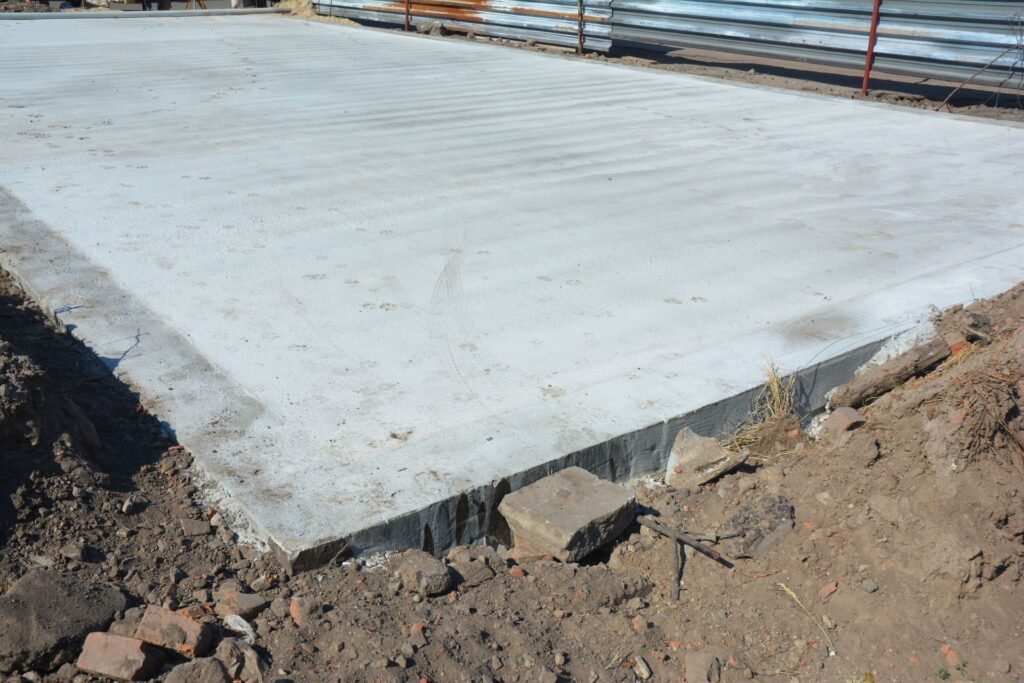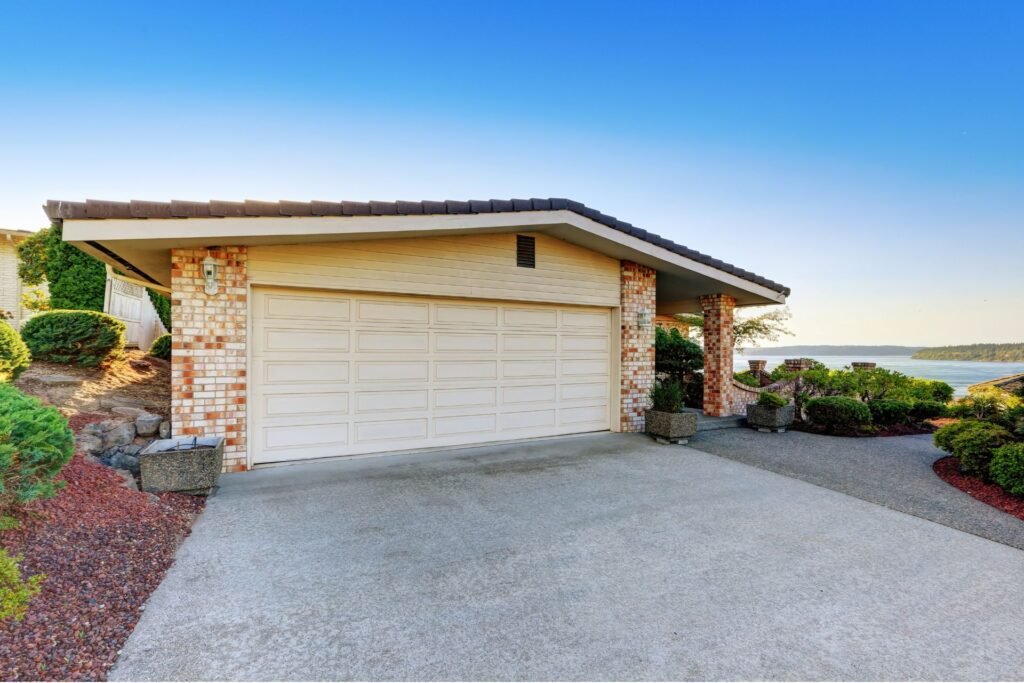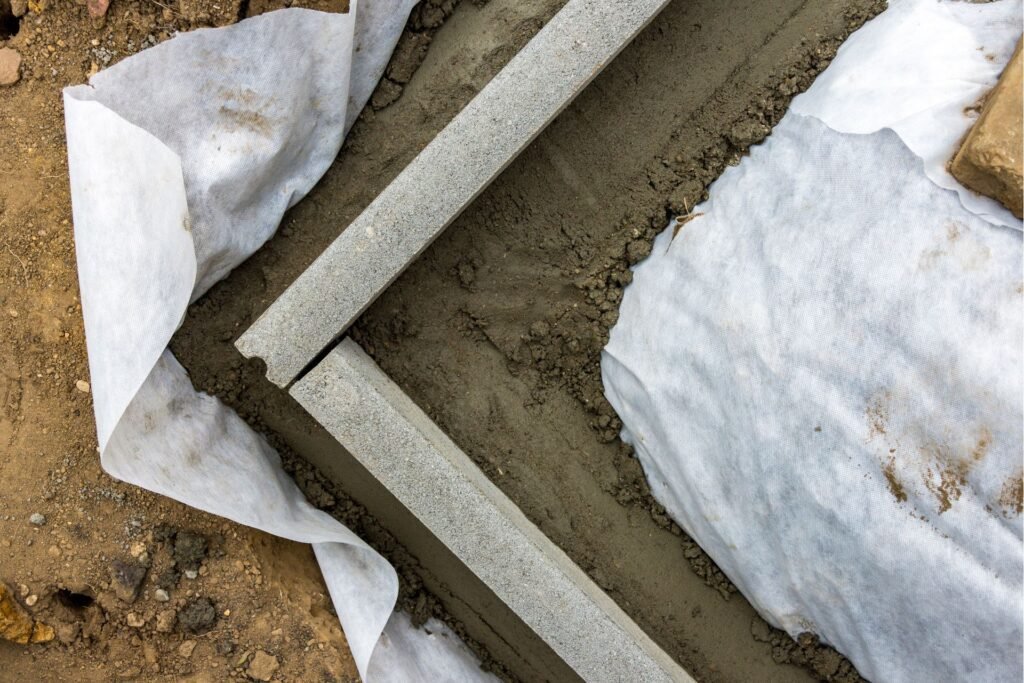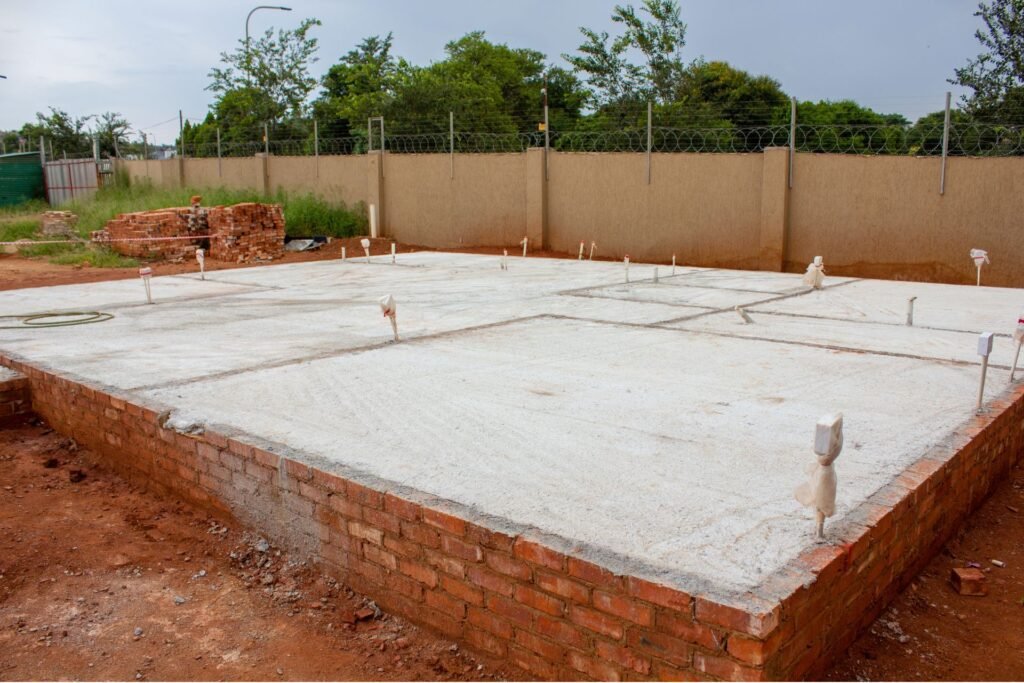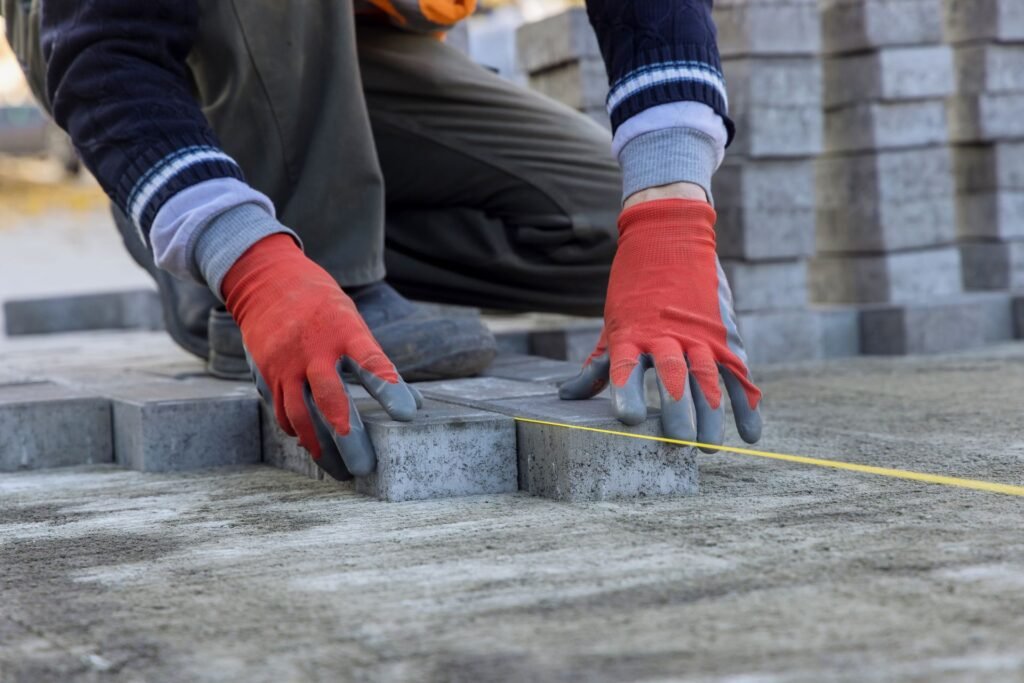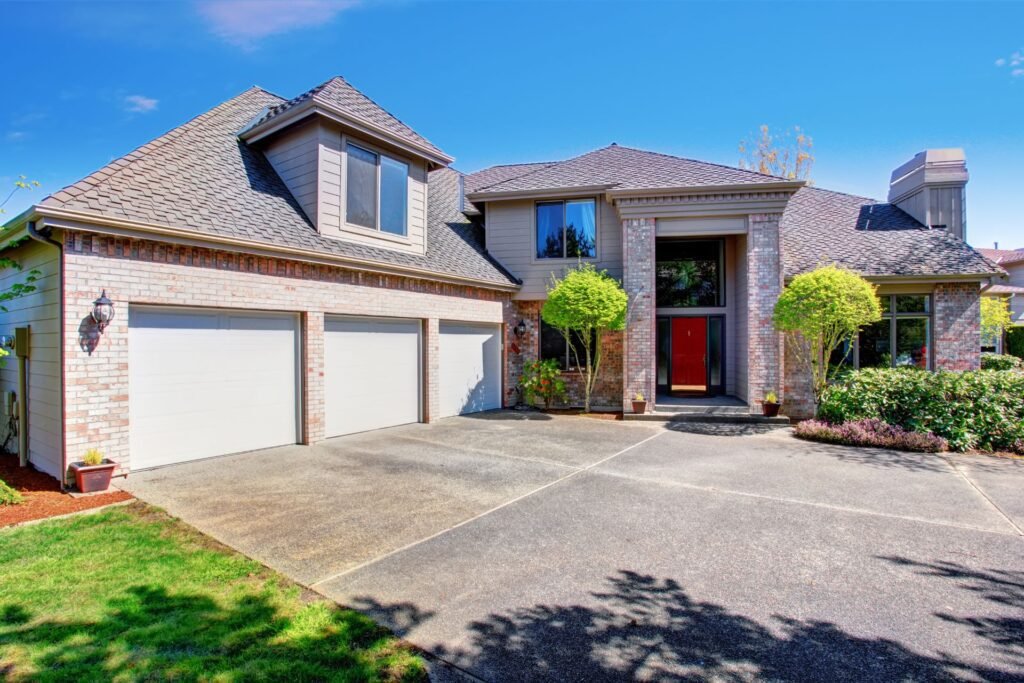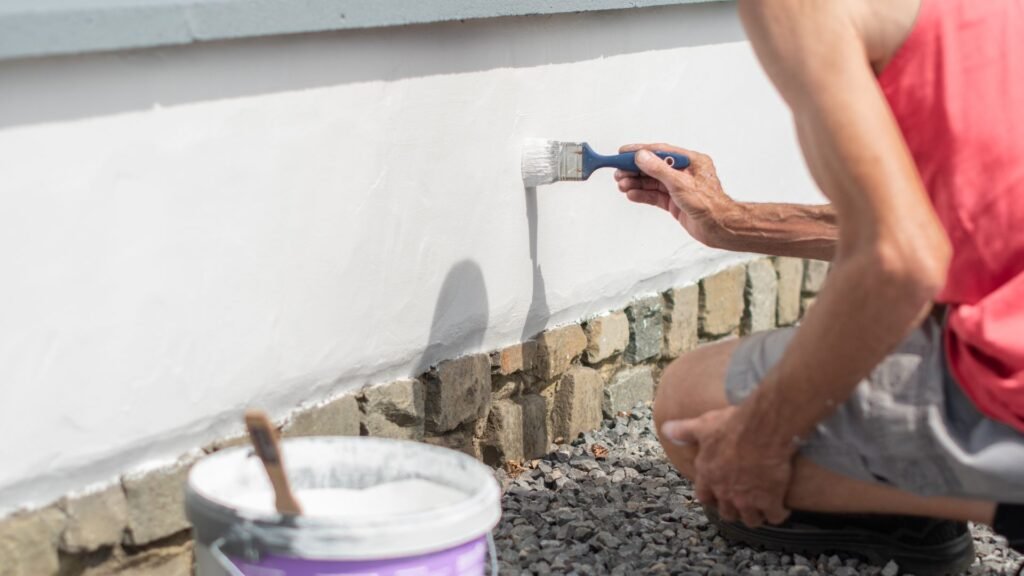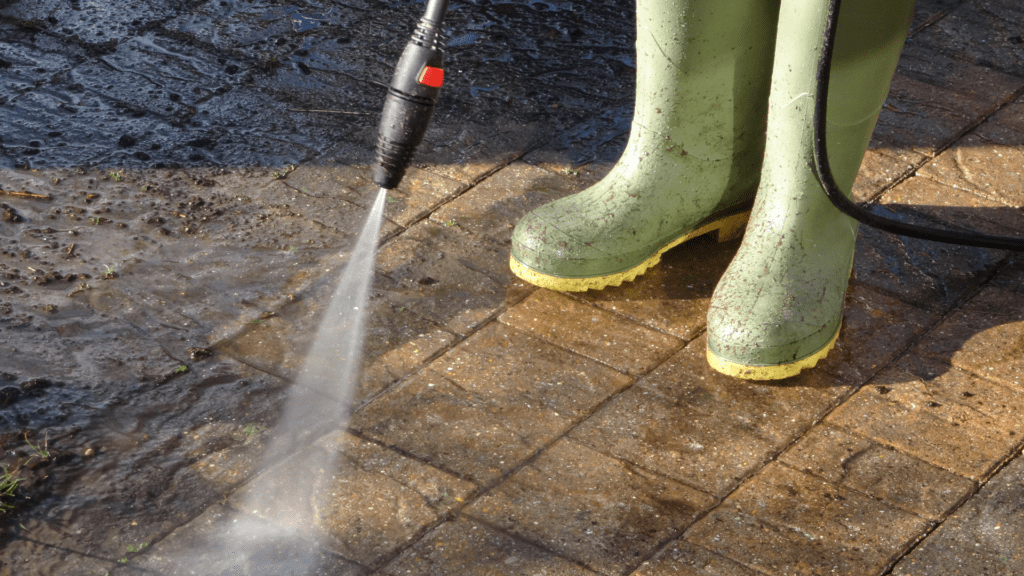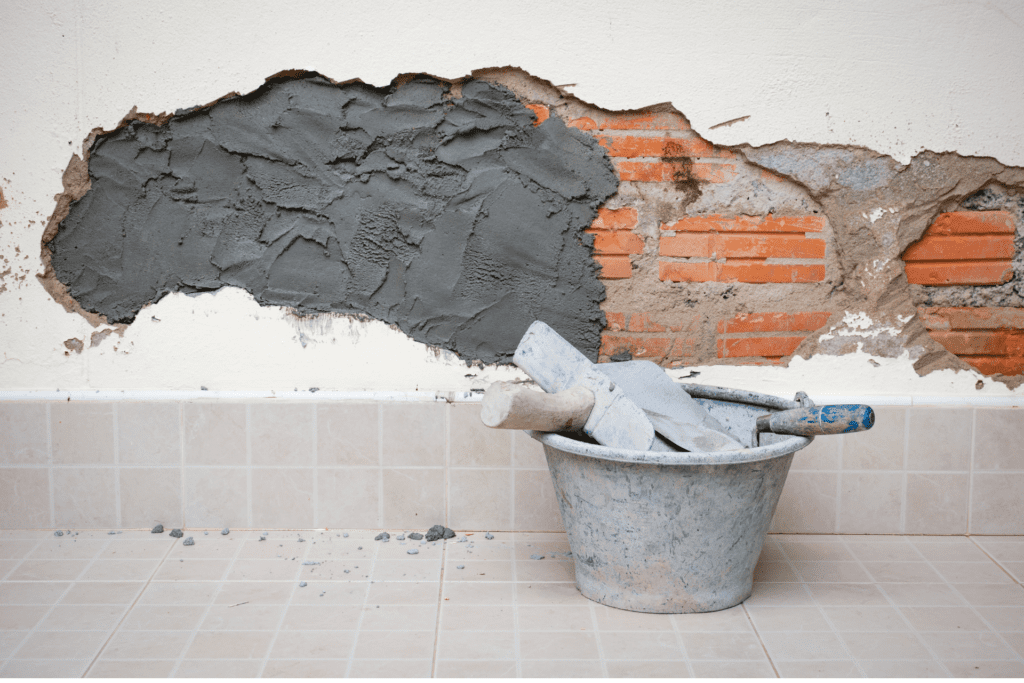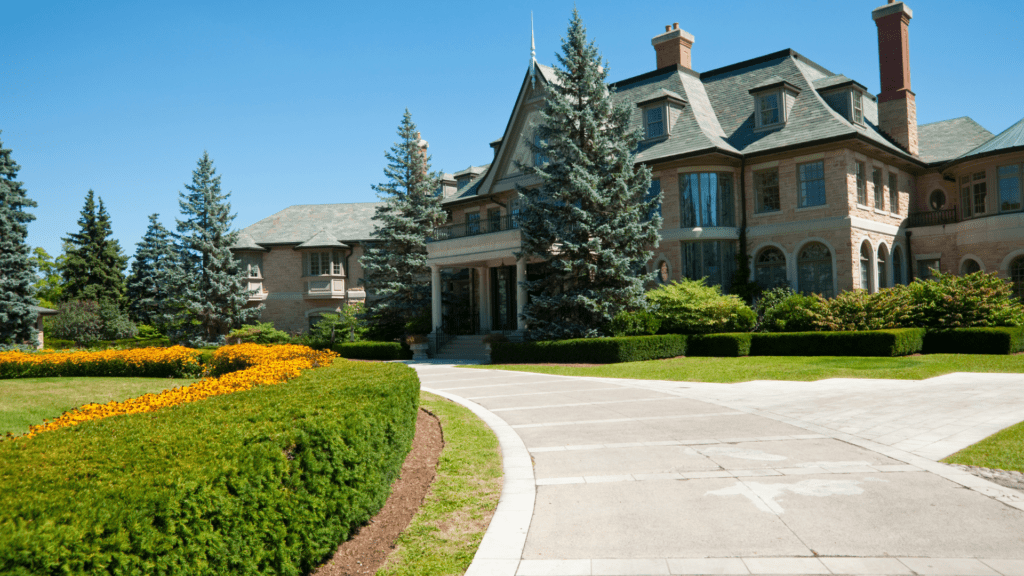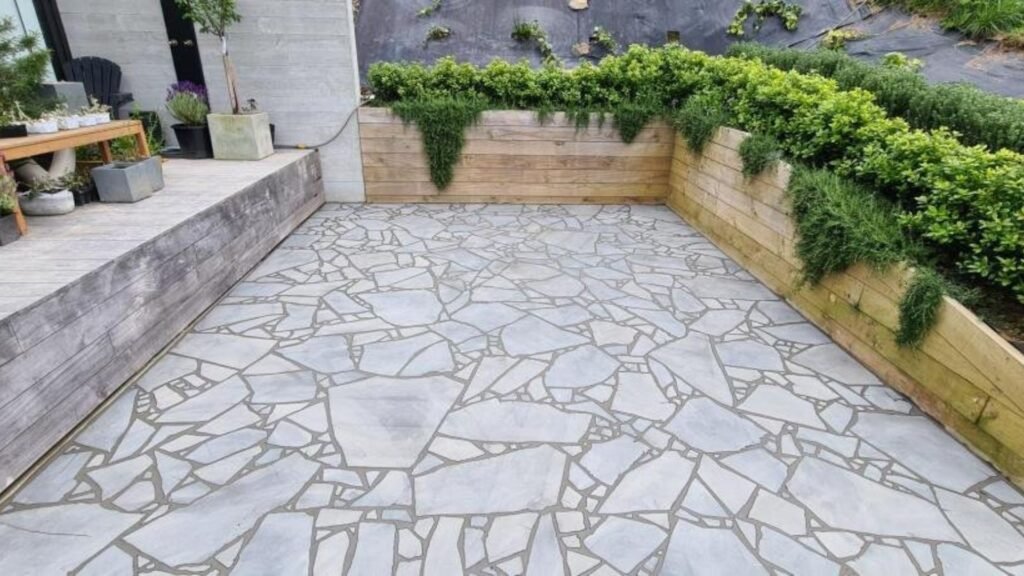Welcome to your complete guide on understanding the cost of a concrete pad in New Zealand. Whether you’re planning a new driveway, patio, or foundation for a shed, budgeting for a concrete pad can feel overwhelming without the right information. In this post, we’ll walk you through everything you need to know, from the factors that influence costs, such as size and material choices, to tips for saving money on your project. By the end, you’ll have a clear understanding of what to expect when planning and budgeting for your concrete pad, ensuring you make informed decisions that meet your needs and budget.
The average cost of a concrete pad in New Zealand ranges from $100 to $150 per square meter, depending on factors such as pad size, thickness, site preparation, and finish. Additional costs may include labour, permits, and reinforcement materials like mesh or rebar, with larger or more complex projects requiring higher budgets.
Table of Contents
What Is A Concrete Pad
A concrete pad is a flat, horizontal surface made by pouring a mix of cement, water, and aggregates (such as sand and gravel) into a specific area, then allowing it to harden and cure. These pads are commonly used for creating durable, stable foundations for a variety of structures and outdoor spaces. Typical applications include driveways, garage floors, patios, and outdoor living areas like decks or walkways. Concrete pads are valued for their strength and reliability, making them a preferred choice for both residential and commercial projects.
Why Choose a Concrete Pad
There are several reasons why concrete pads are a popular choice for many homeowners and builders.
- Durability: Concrete is incredibly strong and can withstand heavy loads, making it ideal for high-traffic areas like driveways and garage floors. It’s resistant to weather elements, erosion, and even fire, ensuring that your investment lasts for years to come.
- Low Maintenance: Once a concrete pad is installed, it requires very little maintenance. Unlike other materials that may need frequent repairs or replacements, concrete typically only needs occasional cleaning and sealing to maintain its appearance and longevity.
- Versatility: Concrete pads can be tailored to fit a wide range of uses and aesthetic preferences. They can be stamped, colored, or finished in different textures to complement your home’s style. This makes them perfect for everything from a sleek, modern patio to a rustic outdoor space.
- Cost-Effective: When considering the long-term benefits, concrete pads are often more cost-effective than other materials. They provide lasting value with fewer ongoing costs for upkeep or repairs.
Concrete Pads in the New Zealand Context
In New Zealand, concrete pads are especially popular due to the country’s varied climate and building practices. With a mix of wet winters and warm, dry summers, concrete offers a weather-resistant option that performs well in these conditions. The stability and durability of concrete pads make them suitable for NZ’s unique building styles, which often emphasize outdoor living. Whether it’s a sturdy garage floor or a welcoming outdoor entertainment area, concrete pads are a practical and aesthetic solution that fits well with New Zealand’s architectural trends.
Additionally, concrete’s ability to retain heat makes it an ideal option for outdoor spaces, ensuring comfort even during cooler months. This combination of durability, low maintenance, and adaptability to New Zealand’s climate and lifestyle explains why concrete pads continue to be a go-to choice for many homeowners across the country.

What Factors Influence Concrete Pad Costs In NZ
Concrete pad costs in New Zealand vary based on several factors. Understanding these factors can help homeowners, builders, and developers get a clearer picture of what to expect when budgeting for a concrete pad project, whether for a driveway, patio, or foundation. Below is a detailed explanation of the key factors that influence the cost.
Size of the Pad
The size of your concrete pad is one of the most significant factors affecting cost. Larger pads naturally require more concrete, materials, and labour, driving up the overall price. Here’s a breakdown.
- Small pads (up to 10 square meters): These are typically used for small patios or garden sheds. The cost can range from $600 to $1,500, depending on the finish and reinforcement.
- Medium pads (around 20-50 square meters): For larger patios or small driveways, you might expect costs between $2,000 and $5,000.
- Large pads (over 50 square meters): These are common for driveways or commercial purposes. Costs can exceed $7,000, especially with added reinforcements or specialized finishes.
It’s important to note that larger pads might offer a slight reduction in the per-square-meter cost, but the overall expense still increases with size.
Thickness of the Pad
The thickness of your concrete pad plays a crucial role in determining cost, especially for driveways or areas designed to support heavy vehicles or equipment. Thicker pads require more concrete and reinforcement, leading to higher costs.
- Standard thickness: Most residential pads are around 100mm thick, suitable for foot traffic or light use.
- Thicker pads (150mm or more): Required for driveways, areas with heavy machinery, or commercial use. The added thickness increases the amount of concrete needed and the associated costs for reinforcement, typically increasing the price by 10-20%.
Location and Access
The location of your site and its accessibility can significantly influence the cost of a concrete pad. In areas where access is straightforward, with no need for specialized equipment or additional labour, costs remain standard. However, difficult-to-reach locations can increase expenses.
- Easily accessible sites: Lower labour and transportation costs, as workers and materials can be moved easily.
- Hard-to-reach areas: Sites that are remote, steep, or require special equipment (such as concrete pumping over long distances) will incur higher costs.
- Remote locations in NZ: Transporting materials to remote or rural areas may add significant costs, especially in areas like rural Northland or the South Island, where delivery charges can be higher due to distance.
Base Preparation and Excavation
Before the concrete is poured, proper site preparation is critical to ensure the pad’s longevity and strength. In many cases, this involves excavation, grading, and laying a stable base. These additional steps can increase costs significantly, depending on the condition of the ground.
- Basic site preparation: If the ground is level and stable, base preparation might cost between $500 and $1,000.
- Excavation or grading: When the ground needs significant levelling or excavation, costs can increase by $1,000 to $3,000 depending on the complexity of the work and the site conditions.
Reinforcement (Mesh or Rebar)
Reinforcement is essential for concrete pads that will bear heavy loads, such as driveways or industrial areas. Reinforcement options, like steel mesh or rebar, help prevent cracking and ensure the pad can withstand weight and pressure over time.
- Standard residential pads: These typically use light mesh reinforcement, costing around $100 to $200 per pad, depending on size.
- Heavy-duty reinforcement: For driveways or commercial pads, rebar or heavy mesh is necessary. This adds to both the materials and labour costs, potentially increasing the total cost by $500 to $1,500 or more, depending on the complexity and size.
Concrete Quality and Finishes
The type and quality of the concrete used, as well as the finish applied, can have a noticeable impact on costs. In NZ, concrete quality and finishes range from standard to decorative options.
- Standard concrete: Suitable for most residential applications, it costs between $100 and $150 per square meter.
- High-strength concrete: Needed for heavy-duty applications, such as commercial projects, costing around $150 to $200 per square meter.
- Decorative finishes: Options like polished concrete, exposed aggregate, or coloured finishes increase both material and labour costs. These decorative choices can add $50 to $100 per square meter to the overall price.
Labour Costs in NZ
Labour costs can vary widely across New Zealand, influenced by the region, the complexity of the job, and the availability of skilled workers. Major cities like Auckland, Wellington, and Christchurch often have higher labour rates compared to rural areas due to higher demand and cost of living.
- Auckland: The highest rates, with concrete workers charging between $50 and $90 per hour.
- Wellington and Christchurch: Labour costs typically range from $45 to $80 per hour.
- Rural areas: Labour rates are lower, ranging from $40 to $65 per hour. However, rural jobs may incur higher travel costs for workers, offsetting some of the savings.
Several factors influence the cost of a concrete pad in New Zealand, including size, thickness, location, and the complexity of the project. Understanding these elements can help you budget effectively and make informed decisions about your concrete pad installation. Always consult with local contractors for a detailed quote, as prices can vary based on the specifics of your project and regional factors.

Average Cost Of A Concrete Pad In NZ (2024 Estimates)
When considering installing a concrete pad in New Zealand, it’s essential to understand the various factors that influence costs. Whether you’re planning a small patio, a medium-sized garage pad, or a large driveway, the price will vary based on size, location, and specific project requirements. Below, we’ll break down the average costs for concrete pads in 2024, as well as other potential expenses you should keep in mind.
Small Concrete Pads: Costs for Typical Small Pads (10-20 Square Meters)
For smaller concrete pads, such as those used for patios, garden sheds, or small outdoor areas, you can expect to pay between $1,000 and $3,000 NZD. These pads typically range from 10 to 20 square meters, and the average cost per square meter for a small project of this size is about $100 to $150 NZD.
The cost includes essential materials like concrete, reinforcement, and basic labor. For a small space, the groundwork required, such as leveling the surface, is generally minimal. However, additional features like decorative finishes or extra reinforcement could raise the overall price.
Medium-Sized Concrete Pads: Costs for Larger Pads (30-50 Square Meters)
Medium-sized concrete pads, which are often used for driveways or garages, range between $3,000 and $7,500 NZD, depending on the exact size and complexity of the project. These pads typically cover an area between 30 and 50 square meters, with an average cost per square meter of $100 to $130 NZD.
This price includes the cost of concrete, materials for reinforcement, labor, and basic finishing. Driveways or garage pads may require additional work, such as installing drainage or creating a sloped surface for water runoff. This can add to the total cost, especially in areas prone to heavy rainfall.
Large Concrete Pads: Costs for Industrial or Large Residential Projects
For industrial-sized concrete pads or large residential driveways, which can cover over 50 square meters, the costs can start at around $7,500 NZD and go up to $15,000 NZD or more, depending on the project’s scale. Large concrete pads often need more substantial groundwork and preparation, which may include excavation, compacting the soil, or laying a thicker slab.
The cost per square meter tends to decrease slightly for large projects, ranging from $90 to $120 NZD, as contractors may offer bulk discounts for large volumes of concrete. However, additional features like advanced drainage systems, reinforced concrete, or specialized finishes can drive up the price.
Cost Per Square Meter: An Easy-to-Understand Breakdown
For most residential concrete pads in New Zealand, you can expect to pay between $100 and $150 NZD per square meter. This estimate typically includes.
- Materials: Concrete, rebar or mesh reinforcement, and any additives.
- Labour: The cost of workers to prepare the site, pour the concrete, and finish the surface.
- Basic Finishing: This covers standard smooth finishes or basic texture options.
Higher-end finishes, such as exposed aggregate, decorative stamping, or colored concrete, will increase the price. Additionally, if your site requires more extensive groundwork or preparation, expect those costs to be added to the total.
Potential Additional Costs: What You Might Overlook
While the average cost per square meter covers the basics, there are several additional expenses that are often overlooked. Some of these include.
- Drainage Solutions: Installing proper drainage, such as channels or soak pits, is crucial for driveways or areas with heavy rainfall. Depending on the complexity of the system, drainage can add anywhere from $500 to $2,000 NZD to your project.
- Permits: Depending on the location and the size of the pad, you may need council approval or building permits. Permit fees vary by region but can range from $200 to $500 NZD.
- Site-Specific Challenges: If your property has uneven terrain, requires excavation, or has poor soil conditions, these factors can increase labor and material costs. For complex sites, you may need to budget an extra $1,000 to $3,000 NZD for site preparation.
- Reinforcement: If the concrete pad is subject to heavy loads (e.g., for parking vehicles), additional reinforcement, like steel rebar, may be necessary. This can add another $10 to $30 NZD per square meter.
- Custom Finishes: If you’re looking for a decorative or premium finish, such as polished concrete, exposed aggregate, or a stamped pattern, these customizations can add anywhere from $20 to $50 NZD per square meter.
The cost of a concrete pad in New Zealand for 2024 can vary widely depending on the size and specific requirements of your project. For small pads, you’re looking at a range of $1,000 to $3,000 NZD, while medium-sized pads for garages or driveways may cost between $3,000 and $7,500 NZD. Large industrial pads or extended driveways can exceed $15,000 NZD.
Remember, while the base cost per square meter typically covers materials and labor, additional costs like drainage, permits, and site preparation can significantly impact the final price. Always get multiple quotes from contractors to ensure you’re getting the best value for your project.

Hidden Costs To Watch Out For
When planning any construction project, such as building concrete pads, it’s essential to anticipate the full scope of costs involved. While you may have accounted for the obvious expenses like materials and labor, several hidden costs can arise that may affect your budget. In this section, we’ll dive into some of the often-overlooked expenses that can catch you off guard, especially when building concrete pads in New Zealand. Let’s explore these in detail.
Permits and Council Approvals
One of the first hidden costs you may encounter is the need for permits and council approvals. Depending on the size of your project and its location, obtaining the proper permissions can add time and cost to the project.
For instance, larger concrete pads, especially in urban areas, are more likely to require permits compared to smaller projects or those in rural settings. Urban councils often have stricter regulations due to zoning laws and environmental impact concerns. It’s crucial to check with your local council to determine what permits are necessary before you start building. In New Zealand, you can easily find this information by visiting your local council’s website or contacting them directly. The permit application process can also include fees, which vary depending on the region and the scope of the project.
Not securing the necessary approvals can lead to costly fines, delays, or even the need to alter completed work. Therefore, allocating time and budget to ensure you’re compliant with all council regulations is a smart move.
Drainage Solutions
Drainage is another factor that’s often overlooked but can significantly impact both the functionality and cost of your concrete pad. Larger pads or those built on sloped land may require specialized drainage solutions to prevent water pooling or structural damage. Poor drainage can lead to long-term issues such as cracking, erosion, and even foundation instability.
To avoid these issues, you’ll need to consider installing proper drainage systems, especially if your pad is situated in an area prone to heavy rainfall or where water runoff is a concern. Basic drainage systems can include channels or slopes designed to divert water away from the pad. The costs for such systems can vary, but it’s not uncommon to spend anywhere from $500 to $2,000 NZD on basic drainage solutions, depending on the size of the pad and the complexity of the land.
Neglecting drainage could lead to expensive repairs down the line, so it’s best to factor this into your initial budget.
Unexpected Ground Conditions
The condition of the ground where you plan to pour the concrete pad is another potential source of unexpected costs. In many cases, the ground may appear level and stable, but once construction begins, issues such as uneven terrain, loose soil, or underground obstacles can arise.
If the ground is uneven or unstable, it may require special treatment, such as grading, compacting, or even adding a gravel base to ensure a solid foundation for the concrete. These additional treatments can drive up costs quickly, sometimes adding thousands to the final bill. It’s recommended to have a professional site assessment before beginning work to identify any potential issues that could increase the project’s cost.
Weather Delays
New Zealand’s weather can be unpredictable, and this can directly impact your construction timeline and costs. For concrete projects, weather plays a critical role. Pouring concrete requires dry conditions for it to set properly, and excessive rain or cold weather can delay your project significantly.
If you’re planning to build a concrete pad during the rainy season or in a region prone to wet weather, expect potential delays. Every day that your project is delayed due to weather conditions can increase costs, as contractors may charge for additional time or rescheduling. Additionally, materials like concrete can deteriorate if exposed to rain before they’re properly set, leading to extra expenses for replacement or repair. To mitigate these weather-related risks, it’s wise to build some buffer time into your project schedule and consider the seasonal weather patterns in your region. Planning ahead can help you avoid surprise costs associated with weather delays. By being aware of these hidden costs permits, drainage solutions, ground conditions, and weather delays you can better prepare for the full scope of your concrete pad project. Planning ahead and factoring in these potential expenses will help you stay within budget and avoid unexpected financial surprises during construction.

Cost Comparison – DIY Vs. Hiring Professionals For Concrete Projects
When it comes to concrete work, one of the biggest decisions you’ll face is whether to tackle the project yourself or hire professionals. Each option has its own set of advantages and drawbacks, and understanding the costs associated with each can help you make an informed decision.
DIY Approach
Taking the do-it-yourself (DIY) route can be appealing to homeowners looking to save money, but it’s essential to recognize what a DIY concrete project truly involves. Here’s a breakdown.
- Material Costs: The core materials for any concrete project include cement, aggregate (gravel and sand), and water. Depending on the size of the project, these costs can add up. You’ll also need reinforcing materials like rebar or wire mesh if your project requires extra support. Concrete is generally sold by the cubic meter or bag, so you’ll need to calculate the volume of your project carefully.
- Equipment Rental: For most DIYers, purchasing specialized equipment isn’t feasible. Common rentals include concrete mixers, wheelbarrows, shovels, and finishing tools. A concrete mixer is essential for ensuring your mixture is smooth and consistent, and renting one can range between $50 and $100 per day in New Zealand. You’ll also need to account for tools like trowels, floats, and a screed to level the concrete.
- Calculating Concrete Quantity: Accurately measuring how much concrete you need is crucial to avoiding wastage or falling short. The basic formula for calculating concrete volume is length x width x depth (in meters). Ensure to include extra for any uneven surfaces or edges, and it’s always better to slightly overestimate.
Pros of the DIY Approach
- Cost Savings: One of the most significant advantages of DIY is the money you save on labor costs. If you’re willing to put in the time and effort, DIY can be substantially cheaper than hiring a contractor.
Cons of the DIY Approach
- Time-Consuming: Concrete work is labor-intensive, and unless you have experience, it can take significantly longer to complete than anticipated. Planning, mixing, pouring, and finishing all take time, and mistakes can be costly.
- Labour-Intensive: Pouring and leveling concrete requires physical strength and endurance. If you’re working on a larger project, the labor involved can quickly become overwhelming.
- Higher Potential for Mistakes: Inexperience can lead to uneven surfaces, incorrect curing, or even cracking later down the line. Fixing mistakes often requires more time, money, and effort than anticipated.
Estimated DIY Costs for a Small Concrete Pad
For a small concrete pad (e.g., 3m x 3m x 0.1m), the cost might look like this.
- Concrete mix: $300 – $400
- Rebar/wire mesh: $50 – $100
- Equipment rental (mixer and tools): $150 – $200
- Miscellaneous (formwork, stakes, etc.): $50 Total: $550 – $750
This estimate doesn’t account for the value of your time or potential extra costs for mistakes or delays.
Hiring Professionals
Hiring a professional contractor is often the go-to solution for those seeking a stress-free and efficient concrete project. While this comes with a higher price tag, the benefits often outweigh the costs for more complex or larger jobs.
- Experience and Expertise: A reputable contractor brings years of experience, which translates to quality workmanship and the ability to handle unforeseen challenges. They’ll ensure that the concrete is properly mixed, poured, and finished to avoid issues like cracking or uneven surfaces.
- Quality Assurance: Professionals know how to deliver a clean, polished finish. With the right techniques and tools, they ensure that your concrete pad or driveway will stand the test of time. Most contractors also offer warranties or guarantees on their work, giving you peace of mind.
- Time Efficiency: Professionals can complete the job much faster than the average DIYer. They have the right crew and equipment to finish the project in a fraction of the time it would take to do it yourself.
Typical Costs for Hiring a Contractor in New Zealand
In New Zealand, the cost to hire a professional for concrete work can vary based on location, project size, and complexity. On average, contractors charge between $75 and $150 per square meter for a simple concrete pad. This cost usually includes preparation, pouring, and finishing, but always be sure to ask for a detailed breakdown. When reviewing quotes, consider.
- Inclusions and Exclusions: Make sure you understand what the quote covers. Does it include material costs, site preparation, and cleanup? Are any additional charges, such as reinforcing materials or special finishes, clearly stated?
How to Choose a Reputable Contractor
- Local Reviews: Check reviews on Google, Facebook, or dedicated trade websites to gauge customer satisfaction. Positive reviews and ratings are strong indicators of quality and reliability.
- Get Multiple Quotes: Always request at least three quotes from different contractors. This not only helps you get a sense of the market price but also allows you to compare services and inclusions.
- Licensing and Insurance: Ensure that the contractor is licensed and insured. This protects you from liability and ensures that the work meets industry standards.
Deciding between a DIY approach or hiring professionals ultimately depends on your budget, time, and comfort level with tackling a concrete project. DIY may offer upfront cost savings, but the risks of mistakes and the labor-intensive nature of the work can be daunting. Hiring professionals ensures a high-quality finish, faster completion, and peace of mind, albeit at a higher cost.
If you’re working on a small, simple project, DIY might be worth considering. However, for larger, more complex jobs, hiring a reputable contractor is often the better long-term investment.

Tips For Saving Money On Your Concrete Pad Project
Saving money on your concrete pad project doesn’t mean cutting corners, it’s about making smart choices and optimizing your resources. Whether you’re building a small patio or a larger foundation, there are several strategies you can use to lower costs without compromising on quality. Here are some practical tips to help you keep your concrete pad project within budget.
Plan the Project Thoroughly
Proper planning is key to avoiding costly mistakes or delays. Before starting your project, take the time to map out every detail, from the size and location of the concrete pad to the materials you’ll need. Poor planning can lead to unforeseen issues, such as running out of materials, miscalculating the area, or needing last-minute changes, all of which can increase your expenses. A well-thought-out plan allows for smooth execution and can help you identify potential challenges in advance, saving both time and money.
Get Multiple Quotes
When hiring a contractor, don’t settle for the first quote you receive. Shopping around and gathering estimates from at least three different contractors is essential. Not only will this give you a sense of the going rate in your area, but it also lets you compare what’s included in each quote. Some contractors might offer a lower price, but their quote may not include necessary features like site preparation or concrete finishing. By comparing quotes side by side, you can make a more informed decision and ensure you’re getting the best value for your money.
Consider Timing
The timing of your concrete pad project can have a big impact on your overall costs. Many contractors experience a slower season during the winter months when demand for outdoor projects drops. By scheduling your project during the off-season, you might be able to take advantage of lower rates as contractors may offer discounts to keep their crews busy. Additionally, suppliers may also reduce prices on materials during these periods, leading to further savings. Flexibility with your project timeline can be a great way to cut costs without sacrificing quality.
Opt for Simple Finishes
Concrete finishes can vary significantly in price. If you’re working within a budget, opting for a basic broom finish instead of a decorative or stamped finish can reduce your costs. While decorative finishes like stamping or staining can enhance the visual appeal of your concrete pad, they often require additional labor and specialized materials, driving up the price. A simple broom finish, on the other hand, is functional, durable, and much more affordable. This minimalist approach still offers a clean look while keeping your expenses in check.
Minimize Waste
Accurate measurement and careful planning are crucial to minimizing waste, which in turn can help keep your project within budget. Ordering too much concrete can lead to wasted materials that you’ve already paid for, while ordering too little could result in costly delays as you wait for additional supplies. Before you place your order, double-check your calculations and make sure you’re accounting for the correct thickness and area. Many contractors recommend adding a small buffer to your order typically around 10% to account for minor variations, but overestimating can lead to unnecessary costs. The goal is to strike the right balance so that you have enough material without overspending.
By following these tips, you can maximize your budget and ensure a successful concrete pad project. Proper planning, timing, and making smart choices regarding finishes and materials will all contribute to a more cost-effective outcome.

FAQs: About Concrete Pad Cost NZ
What is the average cost of a concrete pad in New Zealand?
The average cost of a concrete pad in New Zealand typically ranges from $100 to $150 per square meter, including materials and labour. This price can vary depending on factors such as the size of the pad, the thickness of the concrete, and any additional finishes or reinforcements.
How much does it cost to pour a small concrete pad (e.g., 10-20 square meters)?
For a small concrete pad, such as a patio or shed base, the cost generally ranges between $1,000 and $3,000, depending on site preparation needs, the quality of concrete used, and labour rates in your area. This estimate assumes a basic finish and standard thickness.
Do I need a permit to install a concrete pad in New Zealand?
Permits may be required for larger concrete pads or if they will be used for structural purposes, such as a foundation for a building. It’s best to check with your local council, as regulations can vary depending on the location and the size of the project.
Can I pour a concrete pad myself, or should I hire a professional?
You can pour a concrete pad yourself if you have the necessary skills, equipment, and time. However, for larger pads or projects that require structural integrity, such as driveways or garage floors, hiring a professional is highly recommended. Professionals will ensure the pad is properly leveled, reinforced, and durable, reducing the chances of costly errors.
How thick should a concrete pad be?
The thickness of a concrete pad depends on its intended use. For patios or light structures, a pad of around 100mm (4 inches) is typically sufficient. For driveways or pads intended to support heavier loads, a thickness of 150mm (6 inches) or more is recommended. Thicker pads require more material and reinforcement, which increases costs.
How long does a concrete pad last?
A well-poured and properly maintained concrete pad can last anywhere from 25 to 50 years or more. Factors that influence its longevity include the quality of the materials used, the thickness of the pad, and environmental conditions such as freeze-thaw cycles and heavy traffic.
What finishes are available for concrete pads, and how do they affect the cost?
Common finishes for concrete pads include a basic broom finish (the most affordable), exposed aggregate (more decorative but higher in cost), and polished concrete (a premium option). Decorative finishes such as stamped concrete or coloured concrete also increase the cost due to the extra labour and materials required.
What additional costs should I consider when budgeting for a concrete pad?
In addition to the basic cost of pouring the pad, you should consider site preparation (e.g., excavation and leveling), reinforcement materials (mesh or rebar), drainage solutions, and potential permit fees. Weather conditions and access to the site can also add to the overall cost if special equipment or extra labour is needed.
Can weather affect the concrete pouring process in New Zealand?
Yes, weather conditions can have a significant impact on the timing and quality of the concrete pouring process. Concrete should ideally be poured in dry conditions. Wet or cold weather can delay the project and affect the curing process, potentially increasing costs if extra steps are required to protect the concrete.
What are some tips for saving money on a concrete pad project in NZ?
To save money on a concrete pad project, plan thoroughly to avoid delays, get multiple quotes from contractors, consider scheduling the project during the off-season, and opt for simpler finishes. Also, ensure that you accurately measure the area to avoid wasting materials, and where possible, try to prepare the site in advance to reduce labour costs.
Conclusion
Understanding the key factors involved in the cost of a concrete pad is crucial for both homeowners and businesses looking to budget effectively. By considering elements such as material costs, labor, site preparation, and any additional features like reinforcements or finishes, you can make a more informed decision about your project. While DIY approaches may seem like an attractive option for those looking to save money upfront, it’s important to weigh the potential risks and challenges that come with it. Hiring a professional, although it may involve a higher initial investment, often provides greater long-term value in terms of durability, precision, and reducing the likelihood of costly repairs down the line. By seeking expert help, you can minimize the hassle and ensure that the project is completed efficiently and to a high standard. Whether you opt to tackle the project yourself or bring in a professional, having a clear understanding of the costs and processes involved will help you make the best decision for your specific needs.
About the Author:
Mike Veail is a recognized digital marketing expert with over 6 years of experience in helping tradespeople and small businesses thrive online. A former quantity surveyor, Mike combines deep industry knowledge with hands-on expertise in SEO and Google Ads. His marketing strategies are tailored to the specific needs of the trades sector, helping businesses increase visibility and generate more leads through proven, ethical methods.
Mike has successfully partnered with numerous companies, establishing a track record of delivering measurable results. His work has been featured across various platforms that showcase his expertise in lead generation and online marketing for the trades sector.
Learn more about Mike's experience and services at https://theleadguy.online or follow him on social media:


